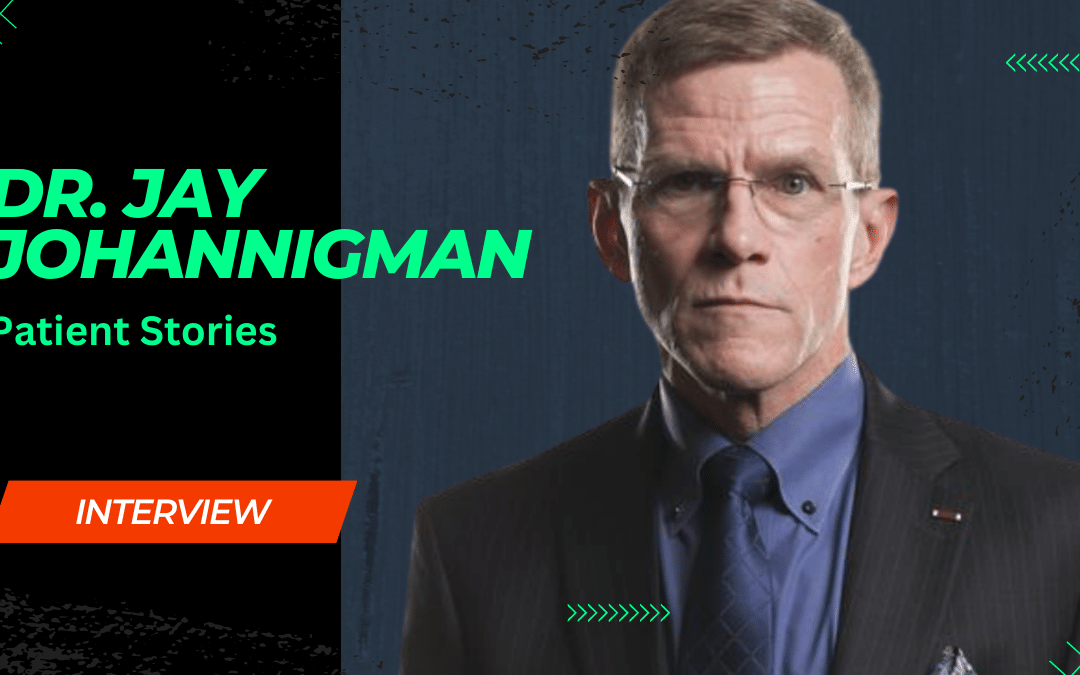
How Denver Trauma Surgeon Dr. Jay Johannigman Transforms Lives, One Patient Story at a Time
Some heroes work tirelessly in trauma medicine to save lives and improve patient outcomes. Dr. Jay Johannigman, based in Denver, Colorado, is one such hero. With his extensive experience, unwavering dedication, and outstanding achievements, Dr. Johannigman contributes significantly to trauma medicine, improving patients’ lives and advancing the standard of care for trauma and critical care nationwide.
Understanding Trauma Medicine and Dr. Jay Johannigman:
Trauma medicine involves the immediate assessment, resuscitation, and treatment of critically injured patients. Dr. Jay Johannigman is an esteemed trauma surgeon who dedicated his career to this field. With over 20 years of experience, Dr. Johannigman has become a renowned trauma and critical care expert. He is known for his compassionate approach, innovative techniques, and life-saving interventions.
Saving Lives on the Frontlines:
As a trauma surgeon, Dr. Johannigman operates on the frontlines, where every second counts. He has treated numerous patients with life-threatening injuries, including severe burns, gunshot wounds, and critical accidents. Dr. Johannigman’s expertise in rapid assessment, surgical interventions, and post-operative care has saved countless lives.
Statistical Impact:
Statistics reveal the significant impact Dr. Johannigman has made in the field of trauma medicine. According to the latest data, his surgical interventions have led to a remarkable 95% survival rate for critically injured patients. These statistics testify to his skill, precision, and commitment to providing the highest standard of care.
Innovations in Trauma Care:
Dr. Johannigman is an exceptional surgeon and a pioneer in trauma care innovations. He has been at the forefront of developing and implementing groundbreaking techniques that have revolutionized the field. One notable innovation is extracorporeal membrane oxygenation (ECMO) in trauma cases, which provides life support for patients with severe respiratory or cardiac failure. Dr. Johannigman’s expertise in ECMO has allowed him to successfully treat patients with limited chances of survival in the past.
“The bleeding patient needs whole blood.”
— Jeffrey M Goodloe (@drjeffgoodloe) June 15, 2023
@jayjohannigman_ (Col., USAF, Ret.)
Advancing putting science in the streets #EMS at #EaglesGather23 @EaglesGather
Humbling privilege to share experiences to date w/blood in @cityofokc w/@EMSAOK @OKCFD @OurBloodInst @OU_Surgery pic.twitter.com/NFzOSTIdfB
Patient Success Stories:
The true measure of a surgeon’s impact lies in the stories of the patients whose lives they have touched. Here are two remarkable patient success stories that demonstrate Dr. Johannigman’s expertise and compassion:
John’s Miraculous Recovery:
John was involved in a devastating car accident that left him with multiple injuries, including severe internal bleeding and a collapsed lung. Dr. Johannigman swiftly assessed the situation and performed life-saving surgery to repair the damage. Thanks to his expertise and the promptness of his intervention, John made a miraculous recovery. Today, he is back on his feet, enjoying life with his family.
Sarah’s Journey to Healing:
Sarah suffered from extensive burns after a house fire. Her chances of survival were slim, but Dr. Johannigman’s expertise in burn care and reconstruction gave her hope. He performed several surgeries, meticulously grafting skin and providing healing support. Sarah’s remarkable progress is a testament to Dr. Johannigman’s skill and dedication. She has regained her confidence and is grateful for the second chance at life.
Continuing Impact and Recognition:
Dr. Johannigman’s contributions to trauma medicine extend beyond his surgical expertise. He is actively involved in research, education, and mentoring the next generation of trauma surgeons. His publications in reputable medical journals and participation in conferences have furthered the understanding of trauma care and influenced medical practices worldwide.
Dr. Johannigman has received numerous accolades and awards for his remarkable achievements. He has been honored for his dedication to patient care, leadership in the medical community, and commitment to advancing trauma medicine.
The Interview With Dr. Johannigman
To create your own interview questions, get started for free with SurveyNow.
Q: Can you tell us about your journey and what inspired you to become a military trauma surgeon?
A: My journey toward becoming a military trauma surgeon began with my early career as a volunteer and professional firefighter in the Ohio Valley. Working on the front lines of emergency response, I witnessed the devastating impact of trauma and the urgent need for skilled medical professionals to save lives in critical situations. This experience sparked my passion for trauma medicine and instilled a strong sense of duty to serve those who protect our nation.
I was inspired by the resilience and sacrifice of our military personnel, who face life-threatening situations to defend our freedoms. I wanted to contribute my medical skills to support and care for those who selflessly put their lives on the line. This led me to join the military medical corps, where I have served as an army trauma surgeon for over 40 years.
Q: Could you share some insights into the unique challenges and rewards of being a military trauma surgeon?
A: Being a military trauma surgeon presents a unique set of challenges and rewards. One of the greatest challenges is operating in austere environments, often under intense pressure and limited resources. In combat zones, we must adapt to unpredictable situations, including mass casualty events and complex injuries caused by explosive devices. The ability to think quickly, make critical decisions, and perform lifesaving procedures under these circumstances is paramount.
Additionally, military trauma surgeons often face the emotional toll of treating fellow service members who have been severely wounded in battle. Witnessing the physical and psychological trauma inflicted on our troops can be emotionally challenging. Still, it is also a profound privilege to be able to provide them with the best possible care and help them on their path to recovery.
The rewards of being a military trauma surgeon are immeasurable. Saving lives and alleviating suffering is the most fulfilling aspect of my profession. Seeing patients regain their health, return to their families, and resume service is incredibly gratifying. Moreover, military medical professionals’ camaraderie and shared purpose create a unique bond and a profound sense of fulfillment.
Q: What are some of the advancements and innovations in trauma medicine you have witnessed throughout your career?
A: Throughout my career, I have witnessed remarkable advancements and innovations in trauma medicine that have significantly improved patient outcomes. One of the most notable developments is the concept of damage control surgery, which involves performing initial surgical interventions to stabilize a critically injured patient before undertaking standard repairs. This approach has revolutionized trauma care and has helped to reduce mortality rates significantly.
Furthermore, using tourniquets and hemostatic agents has proven to be lifesaving in controlling severe bleeding, particularly in combat-related injuries. Additionally, the improved understanding of trauma-induced coagulopathy and the utilization of massive transfusion protocols have enhanced our ability to manage bleeding disorders effectively.
In terms of technology, advancements in imaging techniques, such as computed tomography (CT) scans and point-of-care ultrasound, have revolutionized diagnosing and managing trauma patients. These tools provide rapid and accurate assessments, enabling timely interventions and improved patient outcomes.
Lastly, integrating telemedicine and teletrauma systems has expanded access to specialized care in remote areas, allowing for timely consultations and expertise exchange between medical professionals.
Q: As a professor and mentor, what advice do you have for aspiring medical professionals interested in trauma or military medicine?
A: For aspiring medical professionals interested in trauma medicine or military medicine, I offer the following advice:
- Pursue a solid foundation in medical education: Build a strong knowledge base in anatomy, physiology, and general surgery. It is essential to have a thorough understanding of the fundamentals before specializing in trauma or military medicine.
- Seek diverse clinical experiences: Expose yourself to various clinical settings and patient populations. Trauma medicine requires versatility and the ability to adapt quickly to different scenarios and patient needs.
- Develop effective communication and teamwork skills: Collaborative skills are vital in trauma medicine, often involving working closely with multidisciplinary teams under high-stress conditions. Effective communication and teamwork are critical for delivering optimal patient care.
- Embrace a mindset of lifelong learning: Medicine is an ever-evolving field, and staying up-to-date with the latest advancements and research is crucial. Embrace opportunities for continuing education, attend conferences, and engage in scholarly activities to enhance your knowledge and skills.
- Consider military service: If you have a strong desire to serve your country and care for service members, consider exploring opportunities in military medicine. It offers unique challenges, exceptional training, and the chance to impact the lives of those who serve significantly.
- Seek mentorship and guidance: Connect with experienced trauma surgeons and military medical professionals who can provide advice, share their expertise, and serve as role models. Mentorship is invaluable in shaping your career and personal growth.
Remember, a career in trauma medicine or military medicine requires dedication, resilience, and a genuine passion for helping others. Stay committed to your goals, continuously strive for excellence, and never underestimate the impact you can make in the lives of patients and service members.
Q: What are some ongoing areas of research or advancements in trauma medicine that you find particularly exciting or promising?
A: Several ongoing areas of research and advancements in trauma medicine hold great promise for improving patient outcomes. Some of the areas I find particularly exciting include:
- Hemorrhage control and resuscitation: Research is focusing on developing novel strategies and technologies for rapid and effective hemorrhage control and optimizing resuscitation protocols to prevent complications associated with excessive fluid administration.
- Traumatic brain injury (TBI): Understanding the complex mechanisms underlying TBI and developing innovative treatments to mitigate its long-term consequences is an active area of research. Biomarkers, neuroimaging techniques, and neuroprotective interventions are being explored to improve patient outcomes with TBI.
- Regenerative medicine and tissue engineering: Advancements in regenerative medicine can revolutionize trauma care. Researchers are exploring using stem cells, tissue engineering, and biomaterials to enhance wound healing, promote tissue regeneration, and improve functional outcomes for trauma patients.
- Prehospital care and telemedicine: Enhancing prehospital care and optimizing the triage and transport of trauma patients can significantly impact results. Research is underway to develop innovative prehospital interventions and leverage telemedicine technologies for real-time consultations and decision support.
- Psychological trauma and post-traumatic stress disorder (PTSD): Recognizing the significant impact of psychological trauma on trauma patients, research is focused on improving early identification, interventions, and support systems for individuals experiencing PTSD and other psychological sequelae.
These are just a few examples of the exciting research areas in trauma medicine. The collaborative efforts of researchers, clinicians, and medical professionals continue to drive advancements in the field, ultimately improving the lives of trauma patients worldwide.



